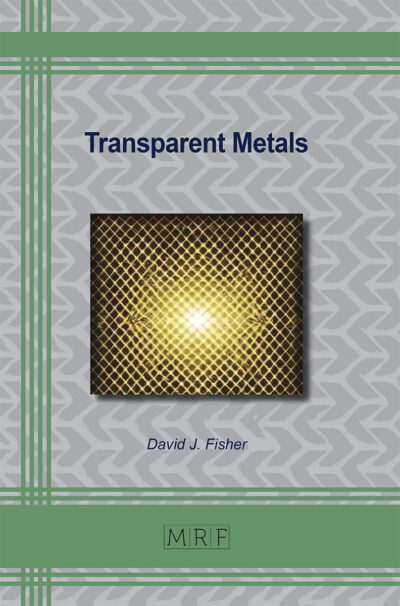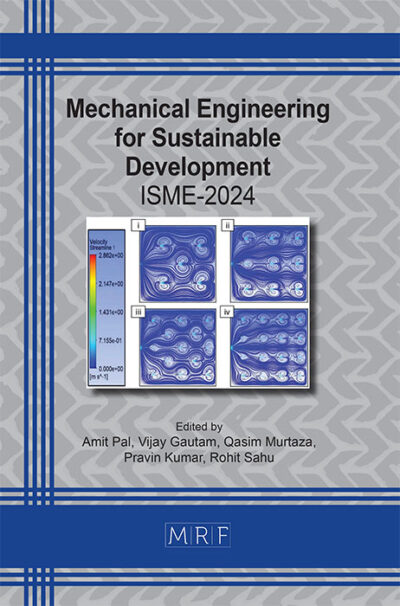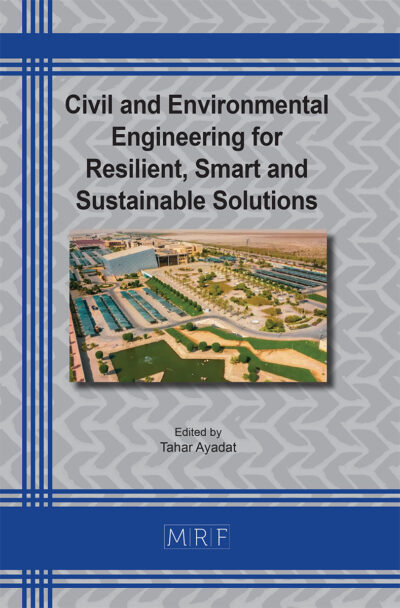Concrete incorporating plastic waste: Challenges and possible solutions
Almotaseembillah AHMED, Abubakr E. S. MUSA, Hammad R. KHALID, Subhan AHMAD
Abstract. Due to huge plastic wastes (PW) accumulation, there have been considerable efforts in recycling and reuse of PW including its utilization in concrete. The developed PW concrete (PWC) has extensively been studied and its mechanical and durability properties are well-documented in the literature. This paper highlights the challenges associated with utilization of PWC and proposes possible solutions and recommendations. The identified challenges will be discussed in this study are: (a) the consistency of the fresh PWC, (b) the impact of low elastic modulus on the application of PWC in floor slabs and beams, and (c) the degradation at high temperature environment. Potential solutions and recommendations to overcome these challenges are also discussed.
Keywords
Plastic Waste Concrete, Recycling, Long-Term Deflection, Floor Slabs
Published online 2/25/2025, 9 pages
Copyright © 2025 by the author(s)
Published under license by Materials Research Forum LLC., Millersville PA, USA
Citation: Almotaseembillah AHMED, Abubakr E. S. MUSA, Hammad R. KHALID, Subhan AHMAD, Concrete incorporating plastic waste: Challenges and possible solutions, Materials Research Proceedings, Vol. 48, pp 530-538, 2025
DOI: https://doi.org/10.21741/9781644903414-58
The article was published as article 58 of the book Civil and Environmental Engineering for Resilient, Smart and Sustainable Solutions
![]() Content from this work may be used under the terms of the Creative Commons Attribution 3.0 license. Any further distribution of this work must maintain attribution to the author(s) and the title of the work, journal citation and DOI.
Content from this work may be used under the terms of the Creative Commons Attribution 3.0 license. Any further distribution of this work must maintain attribution to the author(s) and the title of the work, journal citation and DOI.
References
[1] A.I. Almohana, M.Y. Abdulwahid, I. Galobardes, J. Mushtaq, S.F. Almojil, Producing sustainable concrete with plastic waste: A review, Environmental Challenges 9 (2022). https://doi.org/10.1016/j.envc.2022.100626
[2] S.I. Basha, M.R. Ali, S.U. Al-Dulaijan, M. Maslehuddin, Mechanical and thermal properties of lightweight recycled plastic aggregate concrete, Journal of Building Engineering 32 (2020). https://doi.org/10.1016/j.jobe.2020.101710
[3] Mh. Santhi, H.M. Santhi, Strength and Chloride Permeable Properties of Concrete with High Density Polyethylene Waste, 2017. www.tsijournals.com
[4] N.H. Zulkernain, P. Gani, N. Chuck Chuan, T. Uvarajan, Utilisation of plastic waste as aggregate in construction materials: A review, Constr Build Mater 296 (2021). https://doi.org/10.1016/j.conbuildmat.2021.123669
[5] N. Saikia, J. De Brito, Use of plastic waste as aggregate in cement mortar and concrete preparation: A review, Constr Build Mater 34 (2012) 385–401. https://doi.org/10.1016/j.conbuildmat.2012.02.066
[6] R. Sharma, P.P. Bansal, Use of different forms of waste plastic in concrete – A review, J Clean Prod 112 (2016) 473–482. https://doi.org/10.1016/j.jclepro.2015.08.042
[7] M. Harihanandh, P. Karthik, Feasibility study of recycled plastic waste as fine aggregates in concrete, Mater Today Proc 52 (2022) 1807–1811. https://doi.org/10.1016/j.matpr.2021.11.459
[8] A. Ahmed, S. Ahmad, A.E.S. Musaa, M.A. Al-Osta, Properties of concrete incorporating recycled coarse aggregates and recycled plastic fine aggregates, Innovative Infrastructure Solutions 9 (2024). https://doi.org/10.1007/s41062-024-01470-0
[9] K. Jackson, T. Ama, N. Berko-Boateng Victor, A. Kwabena, Influence of Recycled Waste High Density Polyethylene Plastic Aggregate on the Physico-Chemical and Mechanical Properties of Concrete, International Journal of Scientific Engineering and Science 2 (2018) 22–25.
[10] A.M.M. Al Bakri, S.T. Mohammad, A.R. Rafiza, Y. Zarine, Page_339, 1 (2011) 340–345.
[11] N.L. Rahim, S. Salehuddin, N.M. Ibrahim, R.C. Amat, M.F. Ab Jalil, Use of plastic waste (high density polyethylene) in concrete mixture as aggregate replacement, Adv Mat Res 701 (2013) 265–269. https://doi.org/10.4028/www.scientific.net/AMR.701.265
[12] S.N. Abbas, M.I. Qureshi, M. Abid, M.A.U.R. Tariq, A.W.M. Ng, An Investigation of Mechanical Properties of Concrete by Applying Sand Coating on Recycled High-Density Polyethylene (HDPE) and Electronic-Wastes (E-Wastes) Used as a Partial Replacement of Natural Coarse Aggregates, Sustainability (Switzerland) 14 (2022). https://doi.org/10.3390/su14074087
[13] D. Foti, Use of recycled waste pet bottles fibers for the reinforcement of concrete, Compos Struct 96 (2013) 396–404. https://doi.org/10.1016/j.compstruct.2012.09.019
[14] E. Ikponmwosa, ; Christopher Fapohunda, ; Emeka Aniebona, F. Lasoju, Flexural Behavior of Reinforced Concrete Beams Containing Polyvinyl Waste Powder (PWP) as Replacement of Cement, 2014. http://www.akamaiuniversity.us/PJST.htm
[15] M.L. Anoop Kumar, I. V Ramana Reddy, C. Sasidhar, International Journal of Emerging Technology and Advanced Engineering Experimental Investigations on The Flexural Strength of PET Reinforced Concrete, 2014. www.ijetae.com
[16] K.W. Day, G.W. Hollon, S.H. Lee, J.S. Pierce, S. Popovics, H.C. Robinson, J.H. Rose, J.A. Scherocman, G.B. Southworth, A.B. Spamer, M.A. Taylor, J.W. Weber, D.J.W. Ii, S.G. Barton, L.W. Bell, A.C. Carter, M.T. Conrey, L.W. Bell, Standard Practice for Selecting Proportions for Normal , Heavyweight , and Mass Concrete ( ACI 211 . 1-91 ), (2002) 1–38.
[17] I. Units, ACI-318-19 Building Code Requirements for Structural Concrete and Commentary, 2019. https://doi.org/10.14359/51716937
[18] L. Marker, R. Early, S.L. Aggarwal, Melting characteristics of polyethylenes. A comparative study of low-pressure and irradiated polyethylenes, Journal of Polymer Science 38 (1959) 369–379. https://doi.org/10.1002/POL.1959.1203813408
[19] A.E.S. Musa, An Analytical Bending Solution for Analysis and Design of Long Beams Constructed on the Expansive Soil, Arab J Sci Eng 43 (2018) 5203–5214. https://doi.org/10.1007/s13369-017-3041-x












